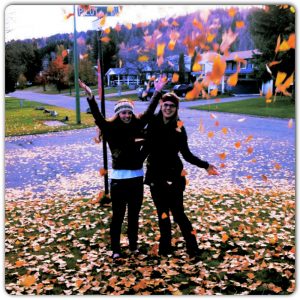Today we can see history by many laws we have in place. If people were not mistreated then we would not have laws preventing certain actions.
The Universal Declaration of Human Rights: foundational document for modern human rights policies, programs, and legislations throughout the world.
Why was this created? In response to WWII’s outcome. The United Nations wanted to prevent the possibility of that kind of conflict in the future. This guaranteed rights to every individual everywhere. We are all aware of Hilter’s brutality in WWII– the eugenics movement and racial hygiene program, such things are prevented today by this declaration
Thought: If Hitler did not go to those extremes and expose the world to the possibilities of such harm and disaster Trump might have been the first to introduce us to that? And we would have no laws against him.
Many unethical experiments have been done in the past, and thus changed how research is executed today. The outcome of research studies such as the Stanford Prison Experiment and Residential Schooling have governed research in Canada to follow general ethical principles to ensure research is done in a way that will not harm anyone. Today we have in place the TCPS2 which ensures that all research follows three criteria:
- Respect for all persons
- Concerns for Welfare
- Justice
In social sciences we have learned from past mistakes; hence, creating laws and criteria to ensure unethical research does not harm anymore people than it already has. This has a toll on my life because I am majoring in sociology and therefore learn about these past experiments in many of my classes and have to use them as examples for ‘what not to do.’ History, yet again, having an impact on this day and age.
1. The Stanford Prison Experiment
Aim: To investigate how readily people would conform to the roles of guard and prisoner in a role-playing exercise that simulated prison life.
Prisoners were treated like every other criminal, being arrested at their own homes, without warning, and taken to the local police station. They were fingerprinted, photographed and ‘booked’. Then they were blindfolded and driven to the psychology department of Stanford University, where Zimbardo had had the basement set out as a prison, with barred doors and windows, bare walls and small cells. Here the deindividuation process began.
Procedure: To study the roles people play in prison situations, Zimbardo converted a basement of the Stanford University psychology building into a mock prison. He advertised for students to play the roles of prisoners and guards for a fortnight.
When the prisoners arrived at the prison they were stripped naked, deloused, had all their personal possessions removed and locked away, and were given prison clothes and bedding. They were issued a uniform, and referred to by their number only. The use of ID numbers was a way to make prisoners feel anonymous. Each prisoner had to be called only by his ID number and could only refer to himself and the other prisoners by number. Their clothes comprised a smock with their number written on it, but no underclothes. They also had a tight nylon cap to cover their hair, and a locked chain around one ankle.
http://www.simplypsychology.org/zimbardo.html
II. Residential Schooling
“Ian Mosby, a food historian and postdoctoral fellow at the University of Guelph (Guelph, Ontario), revealed details of highly unethical nutrition experiments performed on Canadian Aboriginal children at six residential schools between 1942 and 1952 (2) – our own medical atrocities. The experiments were performed by the Department of Indian Affairs of Canada under the direction of two physicians: Dr Percy Moore, the Indian Affairs Branch Superintendent of Medical Services, and Dr Frederick Tisdall, a famed nutritionist, a former president of the Canadian Paediatric Society and one of three paediatricians at The Hospital for Sick Children (Toronto, Ontario) who developed Pablum infant cereal in the 1930s. In these experiments, parents were not informed, nor were consents obtained. Even as children died, the experiments continued. Even after the recommendations from the Nuremberg trial, these experiments continued.”
https://www.ncbi.nlm.nih.gov/pmc/articles/PMC3941673/
We see history everywhere; and not just in History class. I have been able to use my knowledge from this class and input it into many aspects of my other classes.
In my sociology classes I was able to relate my research on prostitution to certain topics because we focused a lot on marginalized groups and unethical treatment. In these classes is also where I questioned the notion of privileged white women such as the Fille Du Rois. In my English class I wrote a paper on mental illness within Hamlet; stating that Hamlet gave the diagnosis for our modern understanding of bipolar disorder– therefore learning from history.
My studies were strongly impacted by learning history. I never realized how prominent history is within our lives today– it’s a past that never dies.
History does not have to do with only society; it impacts each one of our lives as well. We all have our own story to tell and as we get older we are able to understand the ‘whats’ and ‘hows’ to our own life story. Sometimes it takes years to understand our past, and other times we get it right away. We never admitted to our parents that they were right about things they told us when we were all-knowing, stubborn teenagers; it took a few years for us to figure out they were right and maybe admit it. We never believed a thing we were told, but quite often it was true and we didn’t realize it until later. We are made to question things and not believe it right away without proof… sometimes you need a primary source or two.
One day we all be old and have a story to tell… we will be telling Our History within History.
